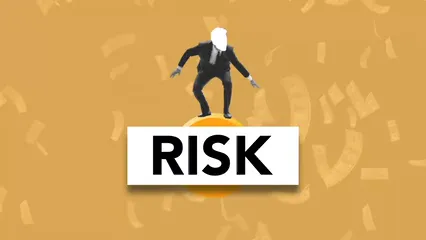Introduction
The CHA2DS2-VASc score is a vital tool. It helps assess stroke risk in patients with atrial fibrillation. This score is crucial in making anticoagulation therapy decisions. The CHA2DS2-VASc evolved from the older CHADS2 score, offering a more detailed evaluation.
Speaking of keeping track of health, a Blood Pressure Monitor is a must-have for those managing their health. Monitoring your blood pressure at home can provide peace of mind and help you stay on top of your cardiovascular health.

Summary and Overview
The CHA2DS2-VASc score evaluates stroke risk in patients with atrial fibrillation. It’s composed of various components, each representing a risk factor. These factors include age, heart failure, hypertension, diabetes, and previous strokes. This scoring system significantly enhances risk stratification in clinical practice.
Using the score helps identify which patients need anticoagulation therapy. A higher score indicates a greater risk of stroke. Implementing this tool can lead to improved patient outcomes, making it essential for healthcare providers.
To help monitor glucose levels, a Glucometer for Diabetes Monitoring is essential for anyone managing diabetes. It allows users to keep track of their blood sugar levels, helping them make informed decisions about their diet and medication.

What is the CHA2DS2-VASc Score?
Definition
The CHA2DS2-VASc score is a clinical prediction tool. It assesses the risk of stroke in individuals with non-rheumatic atrial fibrillation. This score aids in determining whether anticoagulation or antiplatelet therapy is necessary.
Developed as an advancement over the CHADS2 score, it incorporates additional risk factors. This includes vascular disease and gender, offering a more comprehensive evaluation. The CHA2DS2-VASc score is widely used in clinical settings, guiding physicians in treatment decisions.
Atrial fibrillation is prevalent, affecting millions globally. It’s crucial to understand the stroke risk associated with this condition. The CHA2DS2-VASc score provides a systematic approach to evaluate this risk. By leveraging this tool, healthcare providers can enhance patient safety and outcomes.
For those looking to improve their fitness, a Fitness Tracker can be a game changer. These devices not only monitor your activity levels but also help keep you motivated to reach your health goals!

Components of the CHA2DS2-VASc Score
Breakdown of Risk Factors
The CHA2DS2-VASc score helps assess stroke risk in atrial fibrillation patients. Each component carries specific points, reflecting its contribution to stroke risk.
- Congestive Heart Failure (1 point): This condition indicates the heart’s inability to pump effectively. It raises stroke risk due to reduced blood flow and potential clot formation.
- Hypertension (1 point): High blood pressure damages blood vessels. This increases the likelihood of stroke by promoting blood clots and weakening vessel integrity.
- Age Categories:
- Age 65-74 (1 point): Risk slightly increases as age progresses.
- Age ≥75 (2 points): Patients aged 75 and older face a significantly higher stroke risk.
- Diabetes Mellitus (1 point): Diabetes affects blood vessel health and increases stroke risk. Higher blood sugar levels can lead to cardiovascular diseases.
- Previous Stroke, TIA, or Thromboembolism (2 points): A history of these conditions greatly elevates stroke risk, indicating underlying health issues that predispose patients to further events.
- Vascular Disease (1 point): This includes conditions like peripheral artery disease or a history of myocardial infarction. Such diseases indicate compromised blood flow, heightening stroke risk.
- Gender Considerations (1 point for females): Women have a higher stroke risk compared to men, especially in the presence of other risk factors.
The score ranges from 0 to 9, with higher scores correlating to increased annual stroke risks. For instance, a score of 0 indicates a risk of just 0.2%, while a score of 9 can indicate a staggering 15.2% risk.
Understanding these factors is crucial for appropriate management. Assessing personal or patient risk can guide effective preventive strategies.

Additionally, a Medical Alert Bracelet can be a lifesaver. If you have any medical conditions, wearing one ensures that first responders have immediate access to your health information in case of an emergency.
Interpreting the CHA2DS2-VASc Score
Risk Stratification
Understanding the CHA2DS2-VASc score is crucial for managing atrial fibrillation patients. This score ranges from 0 to 9, representing varying levels of stroke risk.
A score of 0 suggests very low risk. Patients in this category typically do not need anticoagulation. For men with a score of 1 or women with a score of 2, consider oral anticoagulation therapy. This is especially important to prevent strokes in moderate-risk patients.
As scores increase, so does the risk of stroke. For scores ≥2 in men or ≥3 in women, anticoagulation becomes strongly recommended. Research indicates that over 80% of patients with scores of 2 or higher will benefit from anticoagulation.
For instance, a score of 2 results in an annual stroke risk of approximately 2.2%. In contrast, a score of 9 can indicate a staggering 15.2% risk. This stark difference highlights the importance of accurate score interpretation.

Staying on top of your health can be easier with a Heart Rate Monitor. It tracks your heart rate during various activities, providing insight into your cardiovascular fitness and helping optimize your workouts.
Healthcare professionals should integrate the CHA2DS2-VASc score into their clinical decisions. By doing so, they can provide tailored patient management that significantly reduces stroke risk. Monitoring and reassessing scores regularly is essential as patient conditions evolve.
Always consider this score in your practice to enhance patient outcomes and ensure effective stroke prevention strategies.

Clinical Guidelines and Recommendations
Current Guidelines
Recent updates to clinical guidelines emphasize the CHA2DS2-VASc score’s role in stroke risk assessment. Both the European Society of Cardiology (ESC) and American Heart Association (AHA) support its use.
According to the ESC guidelines, scores of ≥2 for men or ≥3 for women warrant anticoagulation therapy. This reflects a growing consensus on the necessity of effective stroke prevention measures in atrial fibrillation patients.
Adhering to these guidelines is crucial. Studies show that compliance rates with these recommendations can improve patient outcomes significantly. By following these recommendations, healthcare professionals can ensure they are providing the best care possible.

Speaking of care, a First Aid Kit should be a staple in every home. You never know when a minor injury might happen, and having one on hand can make a world of difference!
Limitations of the CHA2DS2-VASc Score
Potential Drawbacks
While the CHA2DS2-VASc score is a valuable tool, it has notable limitations. Its effectiveness varies among different populations, particularly in older adults and those with unique health profiles. For example, studies have shown that the score may underestimate stroke risk in younger patients with specific comorbidities, such as congenital heart disease.
Moreover, the score does not account for all relevant risk factors. Situations may arise where additional assessments are necessary for accurate risk evaluation. For instance, patients with a history of transient ischemic attacks (TIAs) might require a more nuanced approach, as their risk profiles can differ significantly despite similar CHA2DS2-VASc scores.
Another concern is the reliance on this single score for critical clinical decisions. Research highlights that a significant number of patients with a score of 0 or 1 may still experience strokes, indicating that clinical judgment should not solely rely on numerical scores. A comprehensive assessment combining the CHA2DS2-VASc score with other clinical evaluations is often essential.

To make your home safer, consider investing in a Portable Air Purifier. This device can help improve air quality and reduce allergens, making your living space healthier.
Ultimately, while the CHA2DS2-VASc score provides vital insights, healthcare providers should consider multiple factors in risk assessment. This holistic approach can enhance patient safety and therapeutic outcomes, ensuring a more tailored and effective treatment plan.

Future Directions in Stroke Risk Assessment
Emerging Tools and Research
The landscape of stroke risk assessment is evolving, with ongoing research yielding new insights and potential advancements. Future studies are exploring innovative tools that could complement or even enhance the CHA2DS2-VASc score. For example, researchers are investigating machine learning algorithms to predict stroke risk more accurately by analyzing large sets of patient data beyond traditional risk factors.
Recent findings suggest that integrating biomarkers into risk assessments may provide additional layers of predictive power. These biomarkers could include genetic markers, inflammatory markers, and other blood tests that might offer deeper insights into an individual’s risk profile. Such advancements could reshape clinical practice, enabling more personalized treatment strategies.
Moreover, the CHA2DS2-VASc score itself may see modifications in its components as new evidence emerges. Some studies have proposed alterations, such as refining the weight of certain risk factors or even removing those that show less predictive value. This ongoing evolution will be crucial in ensuring the score remains relevant and effective.

As trends in atrial fibrillation management continue to evolve, staying informed about new research and tools is vital. Healthcare professionals should actively seek updates on stroke risk assessment methods. By following advancements in this field, they can enhance their practice and improve patient outcomes substantially.
And for those moments of relaxation, consider a Meditation and Mindfulness Book. It can guide you through techniques to reduce stress and improve mental well-being.

Conclusion
The CHA2DS2-VASc score plays a vital role in clinical practice. It evaluates stroke risk in patients with atrial fibrillation. By accurately assessing risk, healthcare providers can make informed treatment decisions. This tool helps determine the need for anticoagulation therapy.
Understanding the score is essential for effective stroke prevention strategies. Continuous education in stroke risk management is crucial. Staying updated on guidelines ensures optimal patient care. Remember, knowledge empowers better health outcomes for patients at risk.

For those who love to snack while being health-conscious, a Healthy Snack Box could be the perfect treat. Enjoy guilt-free snacking while staying on track with your health goals!
Please let us know what you think about our content by leaving a comment down below!
Thank you for reading till here 🙂
All images from Pexels




